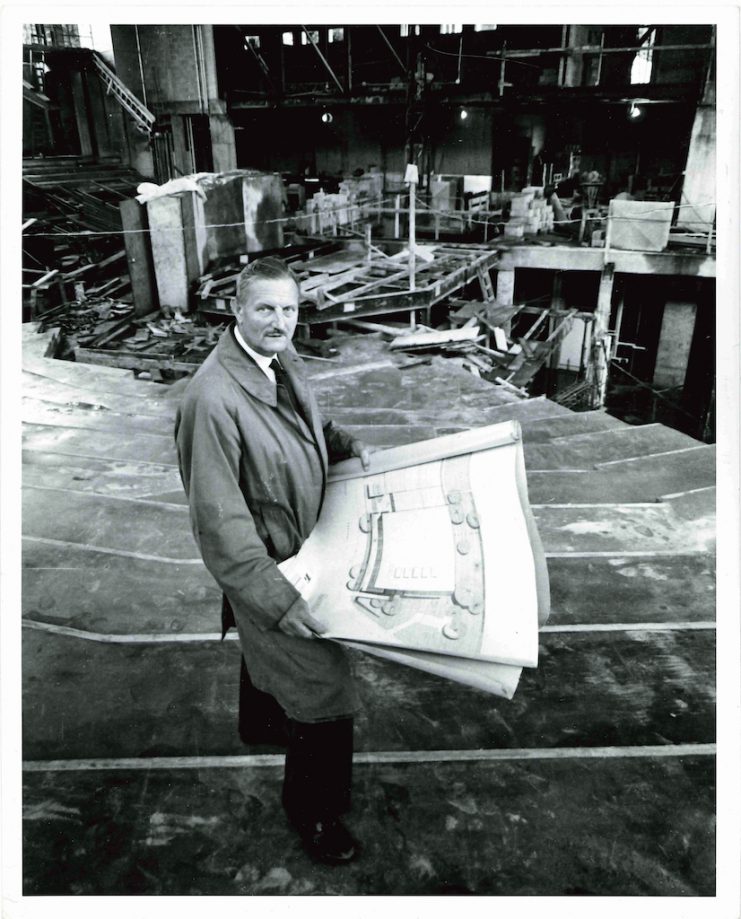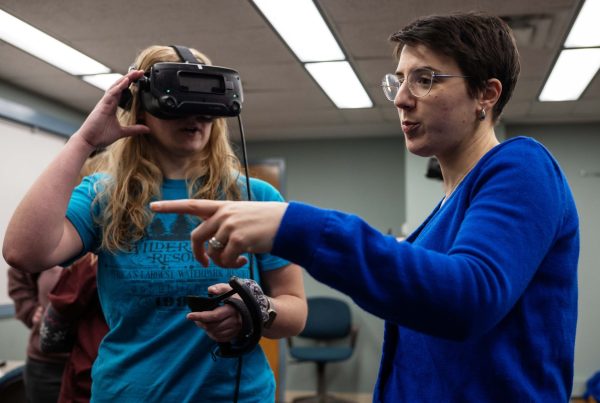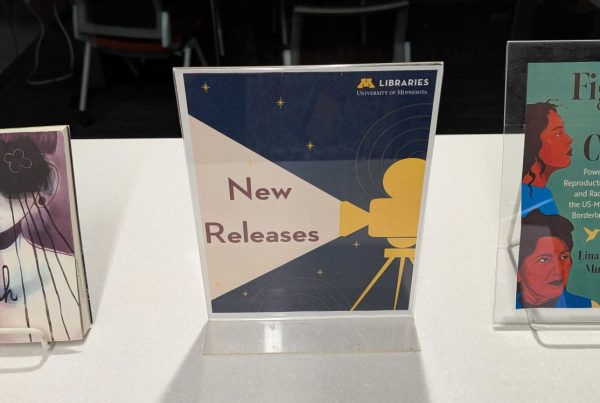Welcome back to U of M Radio on Your Historic Dial!
May 7 marked the anniversary of the Guthrie Theater’s first ever performance in 1963, a production of Hamlet starring George Grizzard and Jessica Tandy.
Founder, Sir Tyrone Guthrie, was one of the most acclaimed theatrical directors of his time. Over breakfast, in March 1959, he and two colleagues, producer Oliver Rea and stage manager Peter Zeisler, resolved that they would create a new theater far from the exhausting commercial demands of Broadway. They knew that in order to make their vision have national relevance, and in the process alter the character of American theater, they had to be as far from New York City, both geographically and mentally, as they could get.
After determining that a Midwestern city would be ideal, Detroit, Milwaukee, and Minneapolis were the decided frontrunners. In May 1960 Minneapolis was announced as the chosen home for their project, due in part to the enthusiastic cooperation of the University of Minnesota’s theater department. The decision was commemorated by a telegram that succinctly states, “Min definite”.
In today’s episode, we’ll hear Sir Tyrone Guthrie explain his vision of the future of American theater in his own words, followed by interviews with the Guthrie staff from ten years later.
You can listen to the episode here in the browser and read the script below.
Podcast (umnradio): Play in new window | Download
Episode 10: An Englishman in Minneapolis
Hello! This is Hannah over in University Archives, and this U of M Radio on Your Historic Dial, episode 10: An Englishman in Minneapolis.

Tyrone Guthrie stands in the Guthrie Theater auditorium while it is mid-construction. Photographer unidentified. Image courtesy of the Guthrie Theater Records, Performing Arts Archives, University of Minnesota Libraries.
If you have ever been to a play at the Tyrone Guthrie Theater, these trumpets are a familiar herald, as they signal the beginning of a performance at the 54-year-old Minneapolis institution. Conceived in 1959 by acclaimed British director Sir Tyrone Guthrie along with his colleagues Peter Zeisler and Oliver Rea, the Guthrie Theater was intended to address what its founders viewed as the creative stagnation they saw in New York City theater. Writers, actors, and designers flocked to Broadway, leading to a surplus of professionals in one place, and a shortage everywhere else in the country. Guthrie wanted to establish a theater somewhere it would have a chance to thrive, introducing audiences to the great dramatic classics he felt they had been deprived of for so long.
Guthrie viewed the United States as too young to have produced any “classics.” He anticipated an audience unused to professional theatre and the classics, essentially, a clean slate. He wanted to create an intellectually demanding audience by not serving them mass-derived “pap,” and teach people to cultivate good taste.
When building the theater that would bear his name, Guthrie insisted that it be a repertory theater, meaning the same actors would perform in different plays each season. In addition to building a strong ensemble who would carry the productions, he believed that repertory was better for the individual actors, as they would avoid being typecast. He also avoided casting the occasional big name, saying in the New York Times, “One of the most boring things about Broadway is knowing from the moment you read a name on the program precisely the performance you may expect.”
Now we’ll jump forward 10 years to 1973, when KUOM produced Guthrie Greenroom, a program that gave listeners a thorough look behind the scenes through interviews with different members of the theater’s creative staff, including the Artistic Director, Set Designer, Voice and Movement Coach, and of course, one the actors. Produced during the Guthrie’s 11th season, we get some insight into how Tyrone Guthrie’s legacy has been carried on up to this point. Listen in on Donald Schoenbaum and Sheila Livingston, the Managing Director and Education Coordinator at the time, discuss their positions, and how they helped to fulfill Tyrone Guthrie’s founding mission of developing an audience eager for good theater.

An early promotion from the Guthrie Theater, detailing “How to pick your dates for the Guthrie Theater” . Image courtesy of the Guthrie Theater Records, Performing Arts Archives, University of Minnesota Libraries.
Listening to Tyrone Guthrie’s upper crust accent might make one wonder why he deemed himself the person responsible for evolving the character of American theater, but the earnest efforts made by the outreach team to bring students and senior citizens into the Guthrie shows that in their view, the theater, and the plays performed within it, are for everyone.
If you want to learn more about the Guthrie Theater, I encourage you to reach out to the University of Minnesota’s Performing Arts Archives, which houses the Guthrie Theater’s records.
On the next episode, we’ll mark another anniversary: 45 years ago this month, the University of Minnesota campus erupted in protests against the Vietnam War. Tune in to hear reports from the ground during that tumultuous week. Thanks for listening!
The U of M Radio on Your Historic Dial podcast is produced every other week for your enjoyment.Subscribe or download on iTunes or GooglePlay so you don’t miss another moment of historic Minnesota radio.
If you enjoy our clips and want to hear or learn more, go to www.lib.umn.edu/uarchives, and search KUOM in the collection guides.
Digitization of University Archives recordings was financed in part with funds provided by the State of Minnesota from the Arts and Cultural Heritage Fund through the Minnesota Historical Society.
—Hannah O’Neill is a project archivist for the University of Minnesota Archives. To learn more about the University of Minnesota Archives, please visit www.lib.umn.edu/uarchives.




